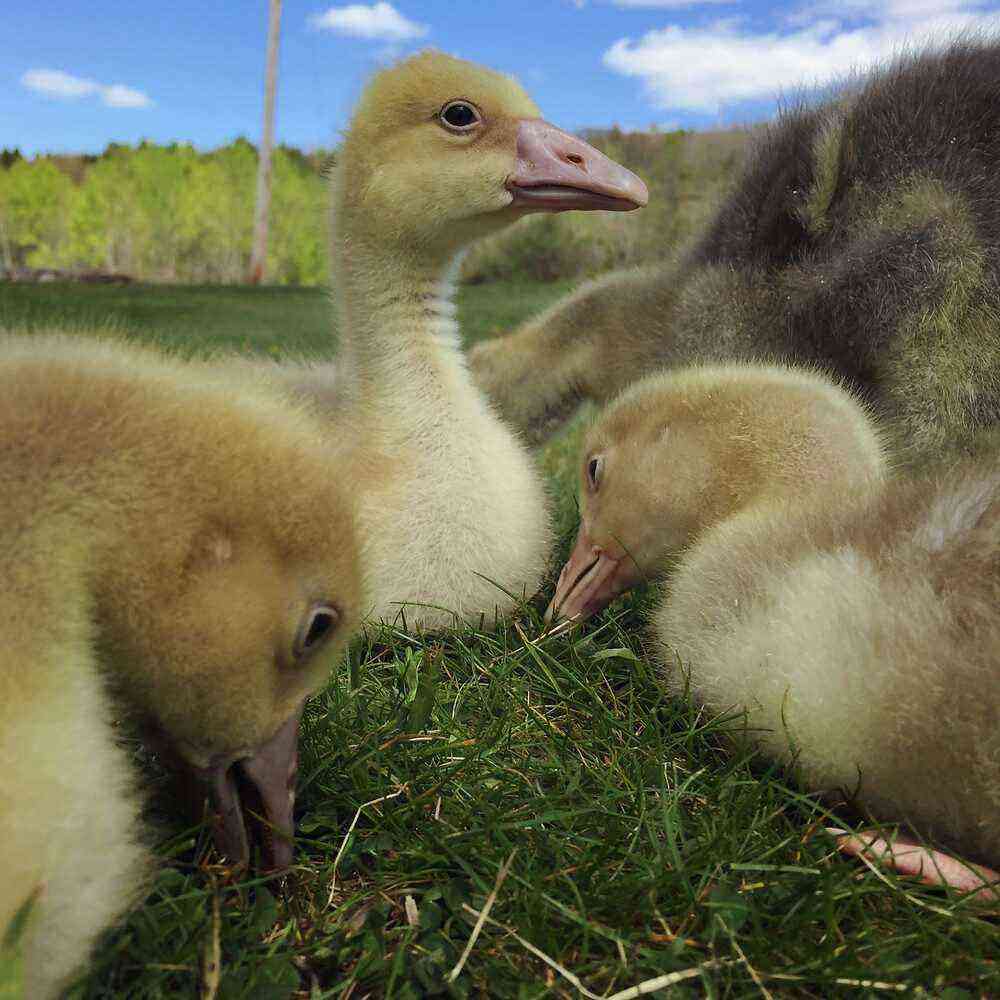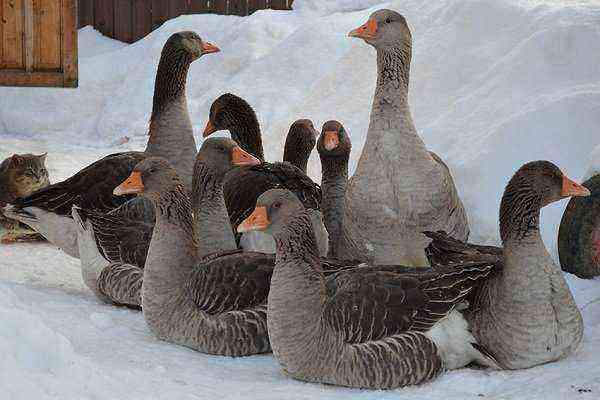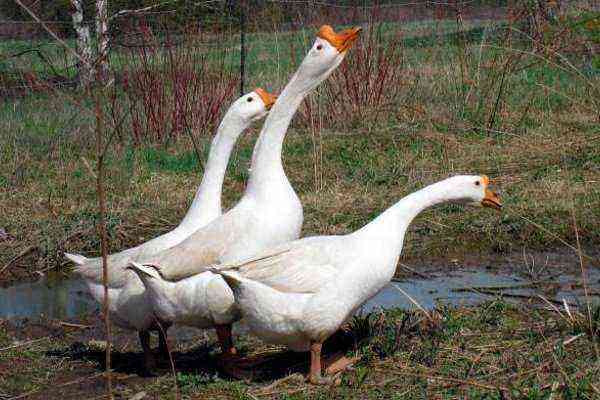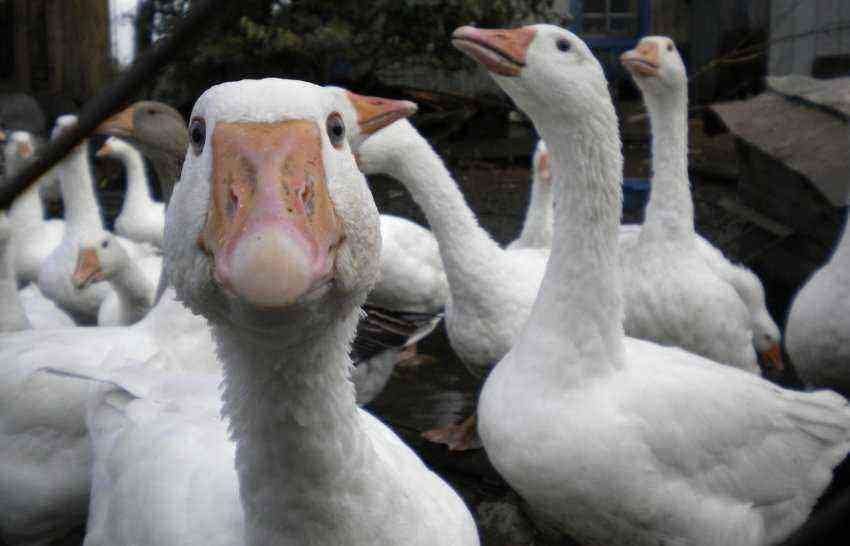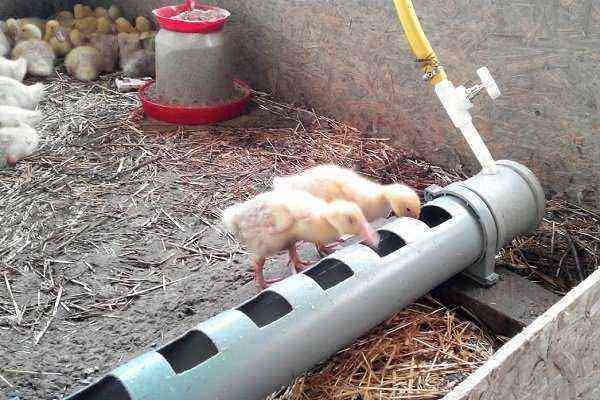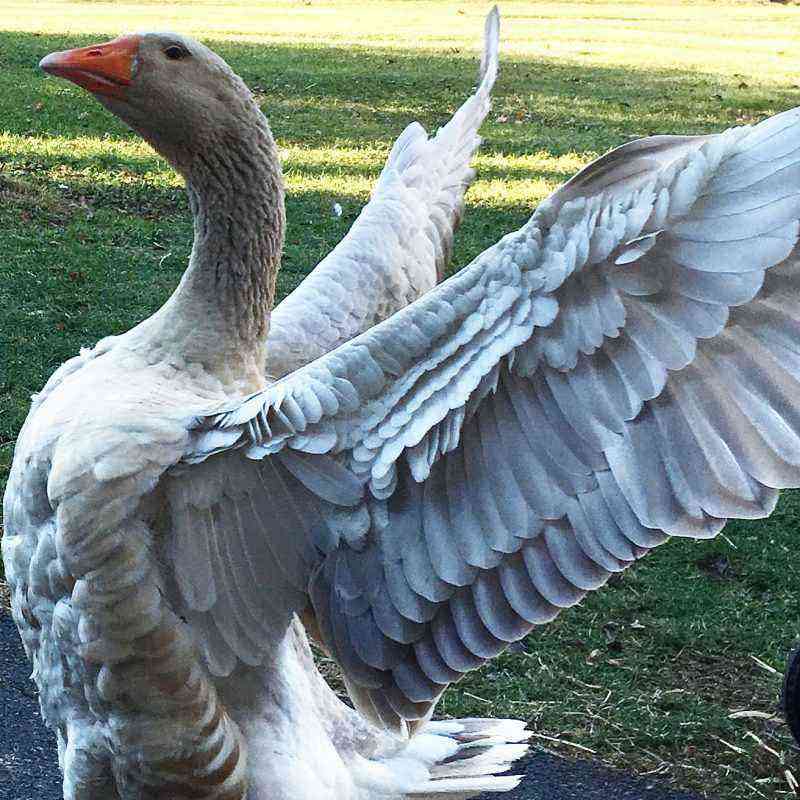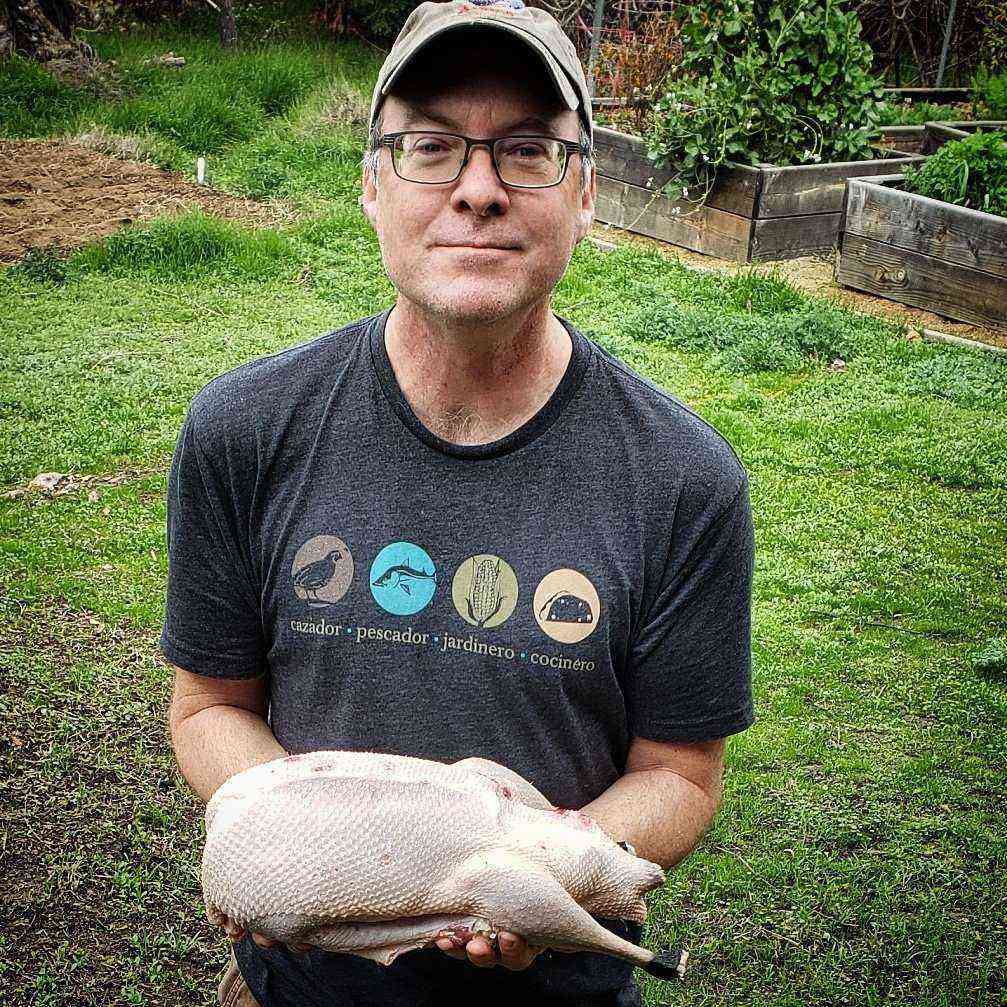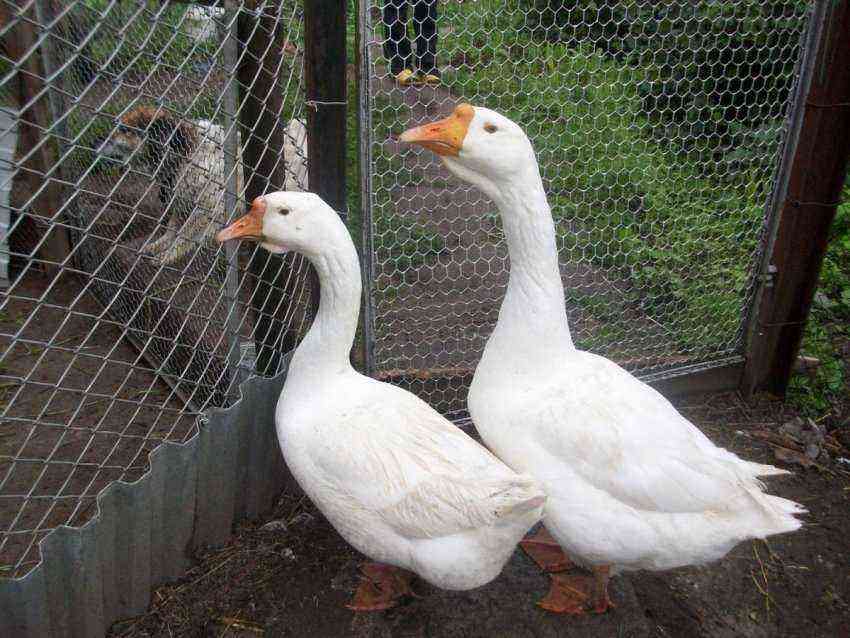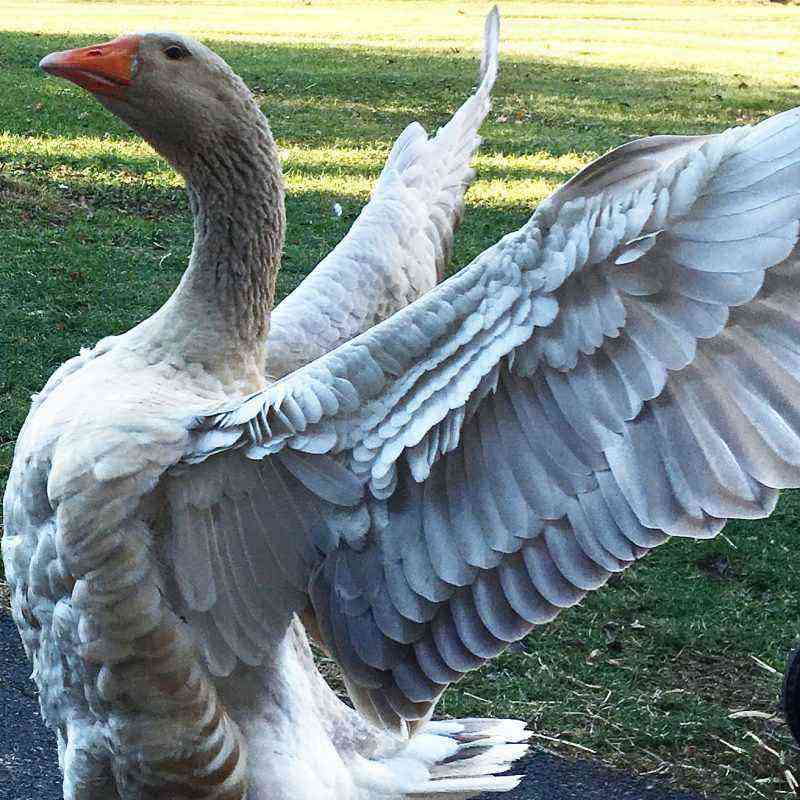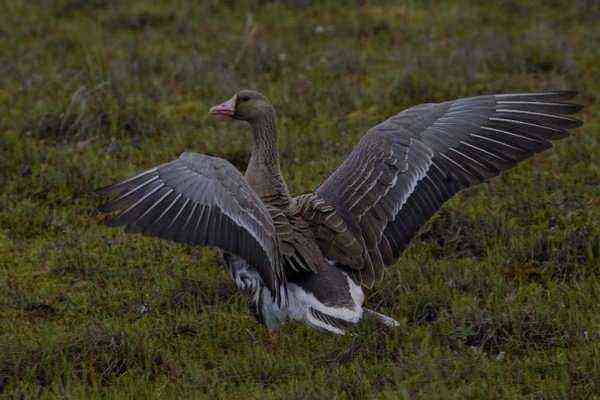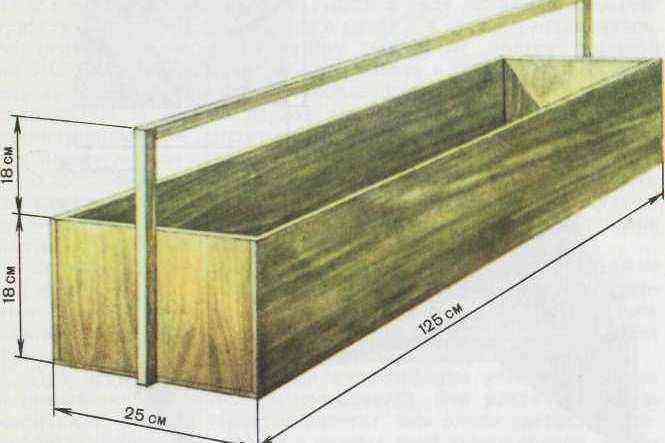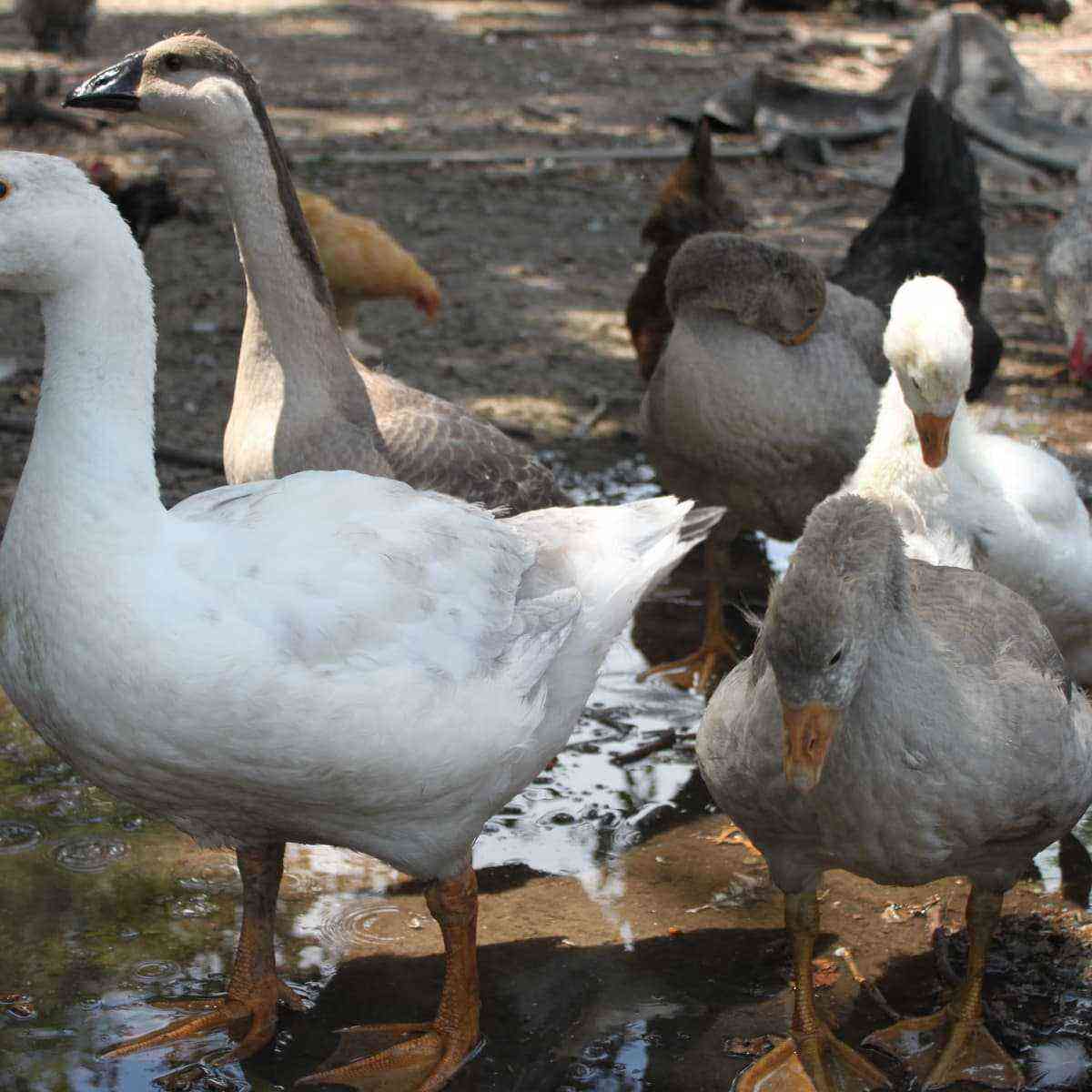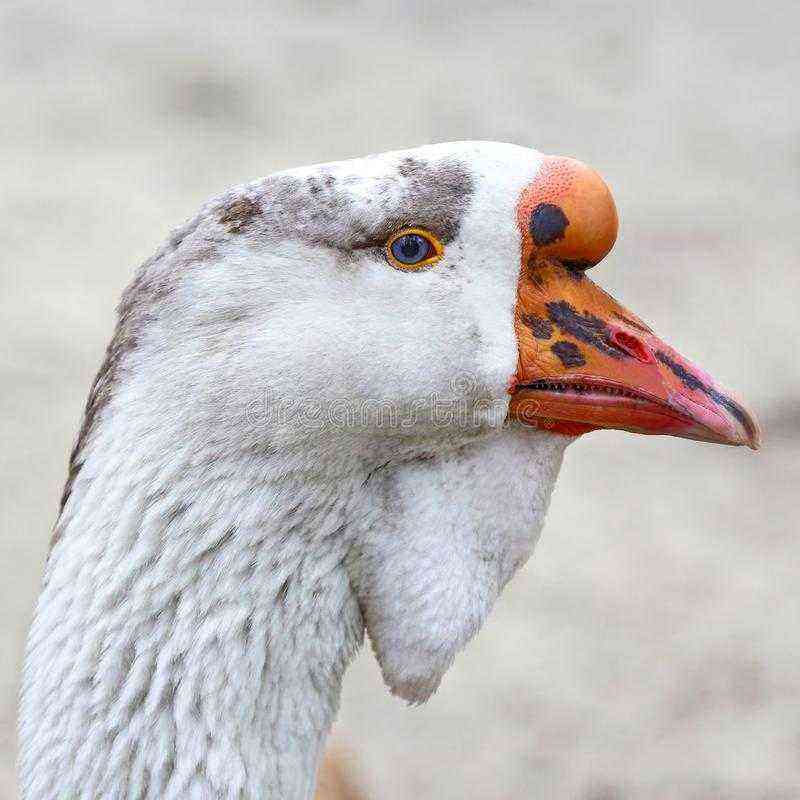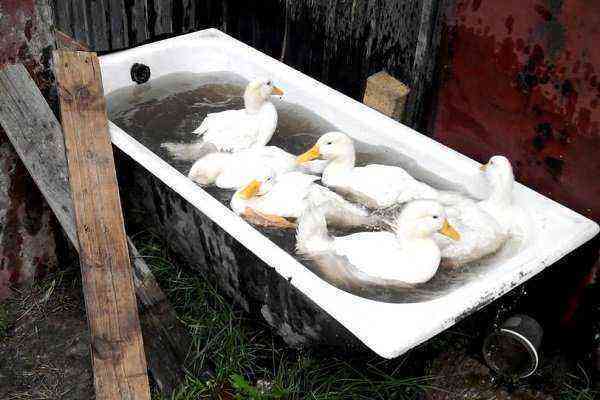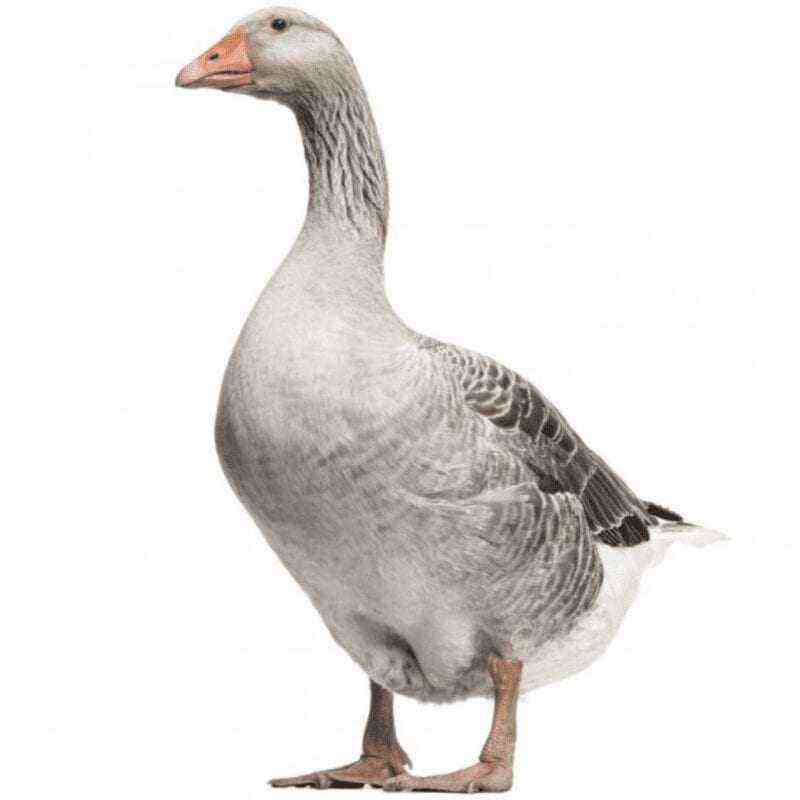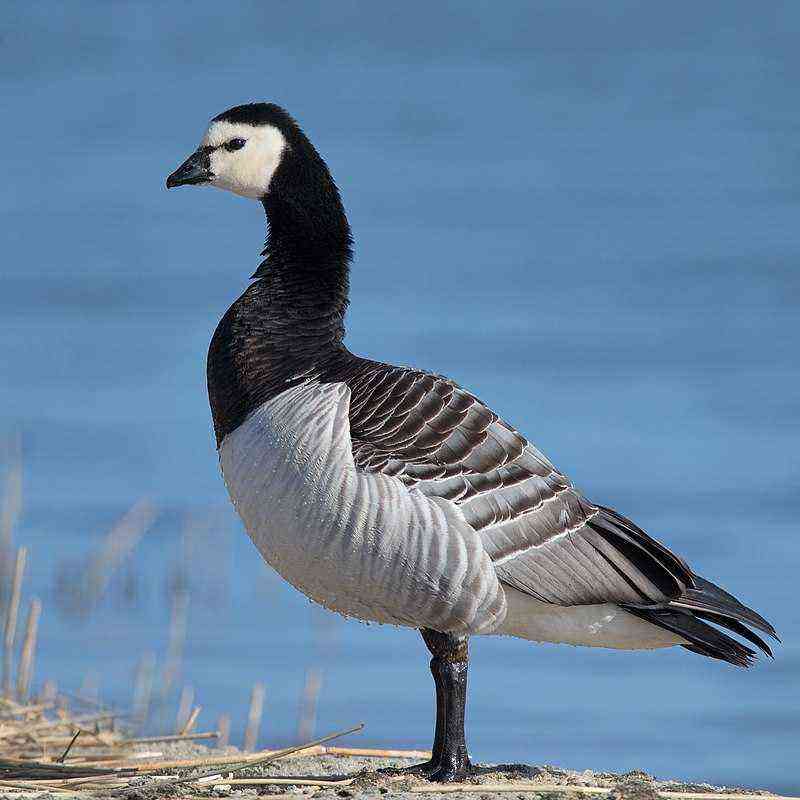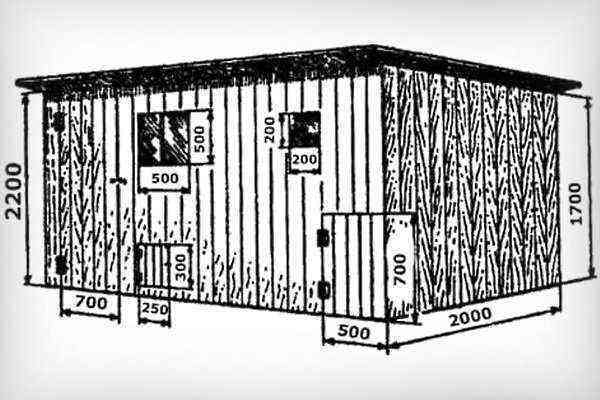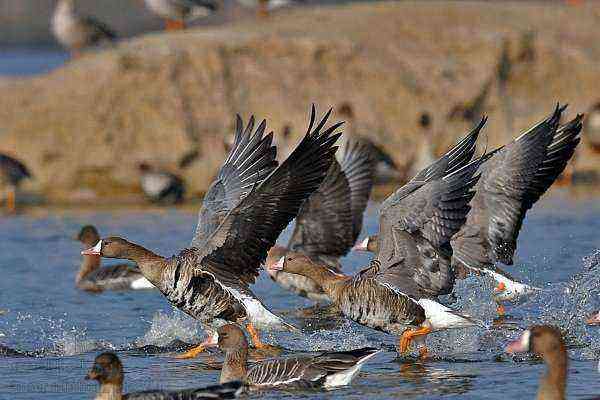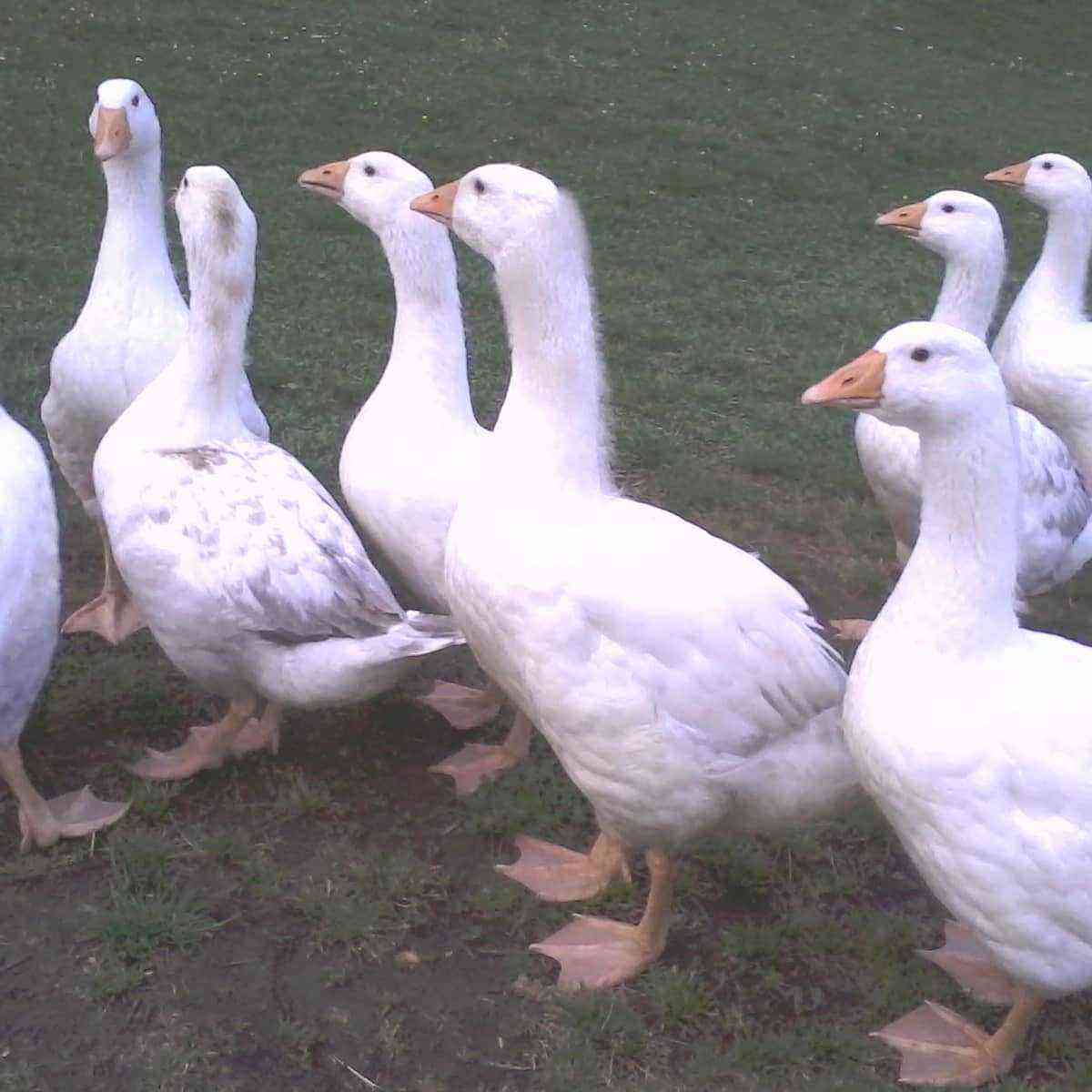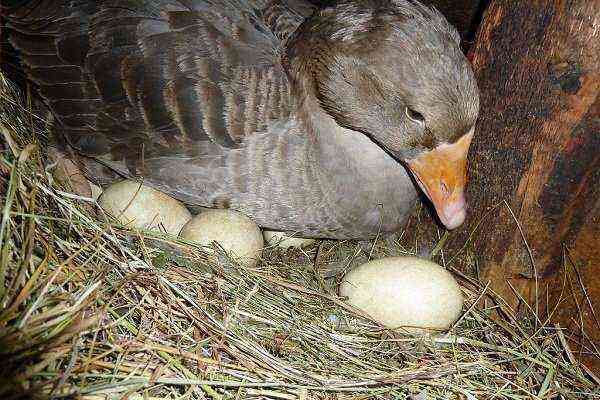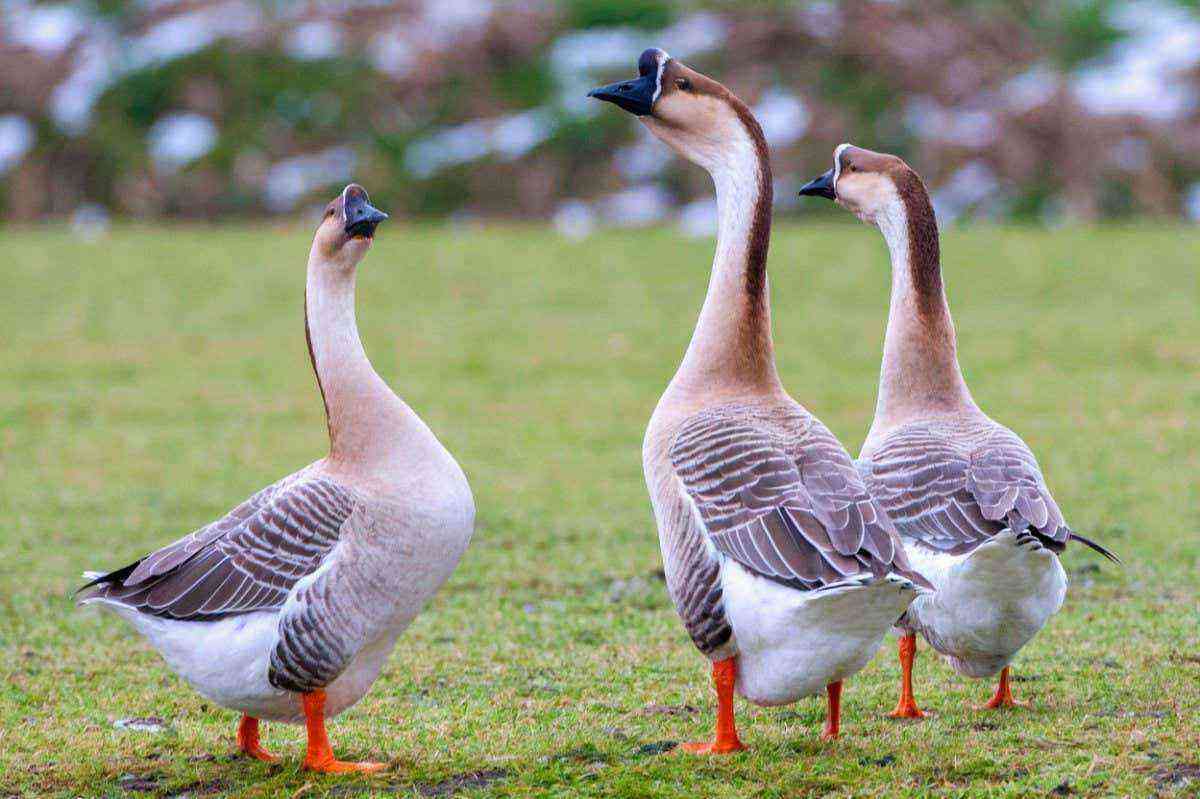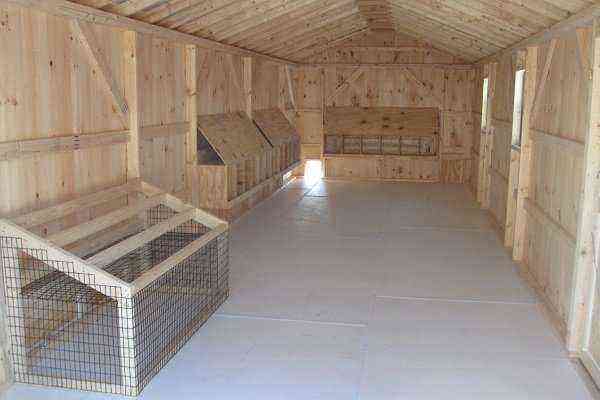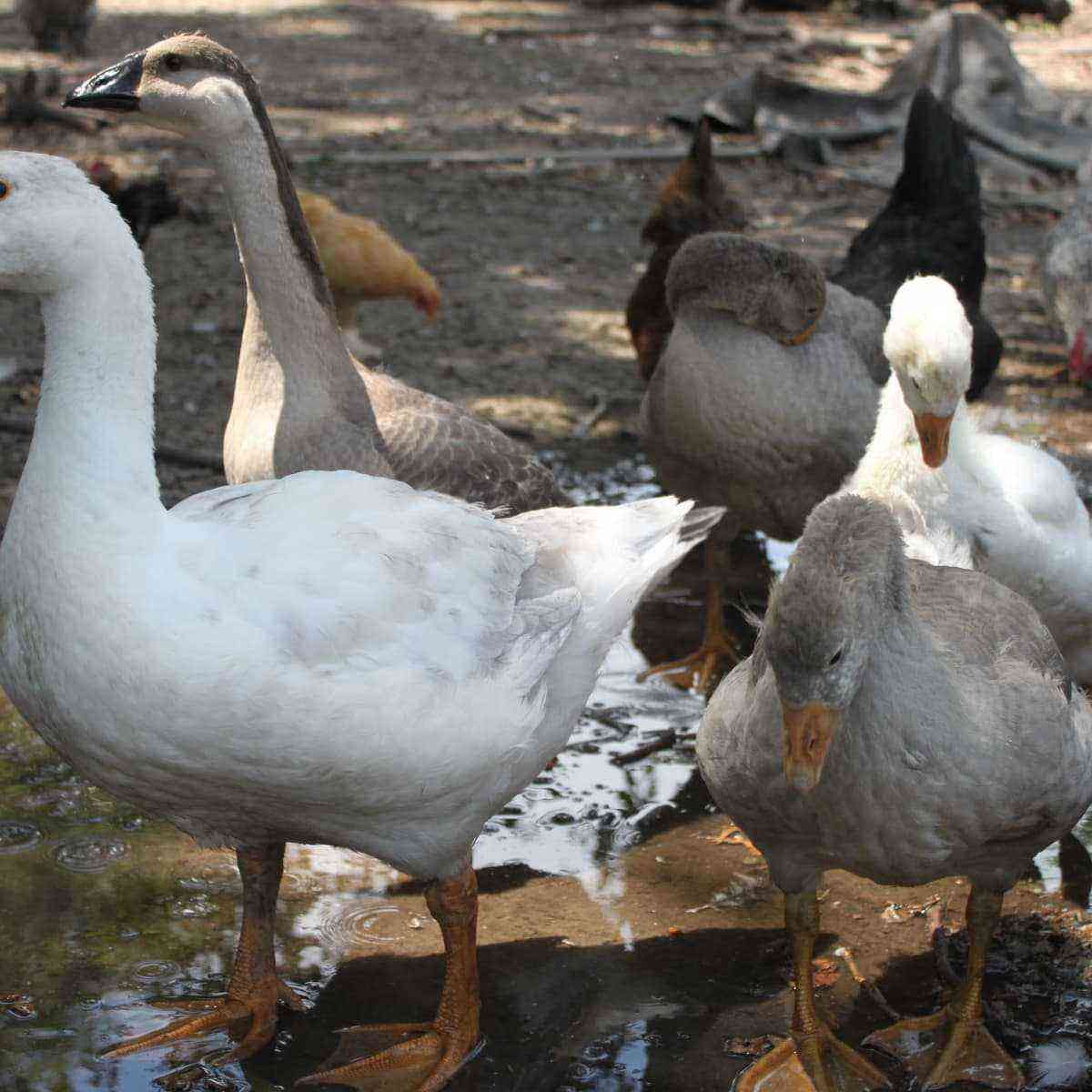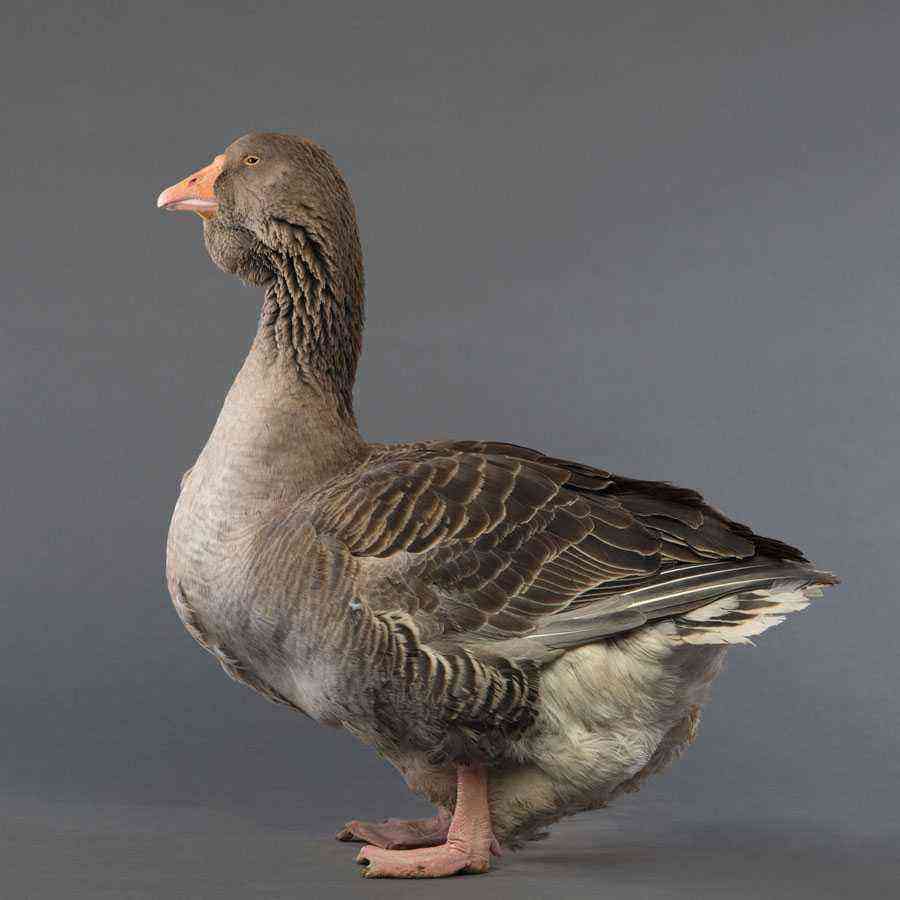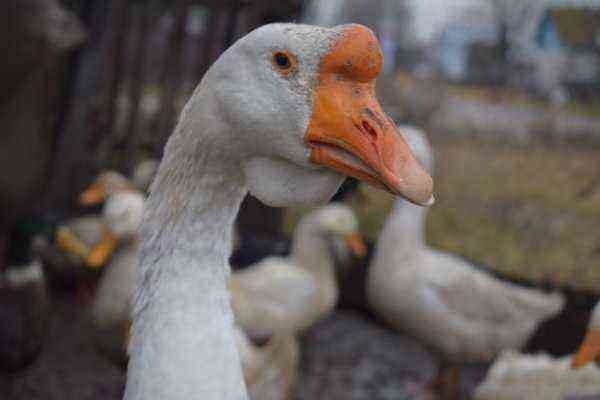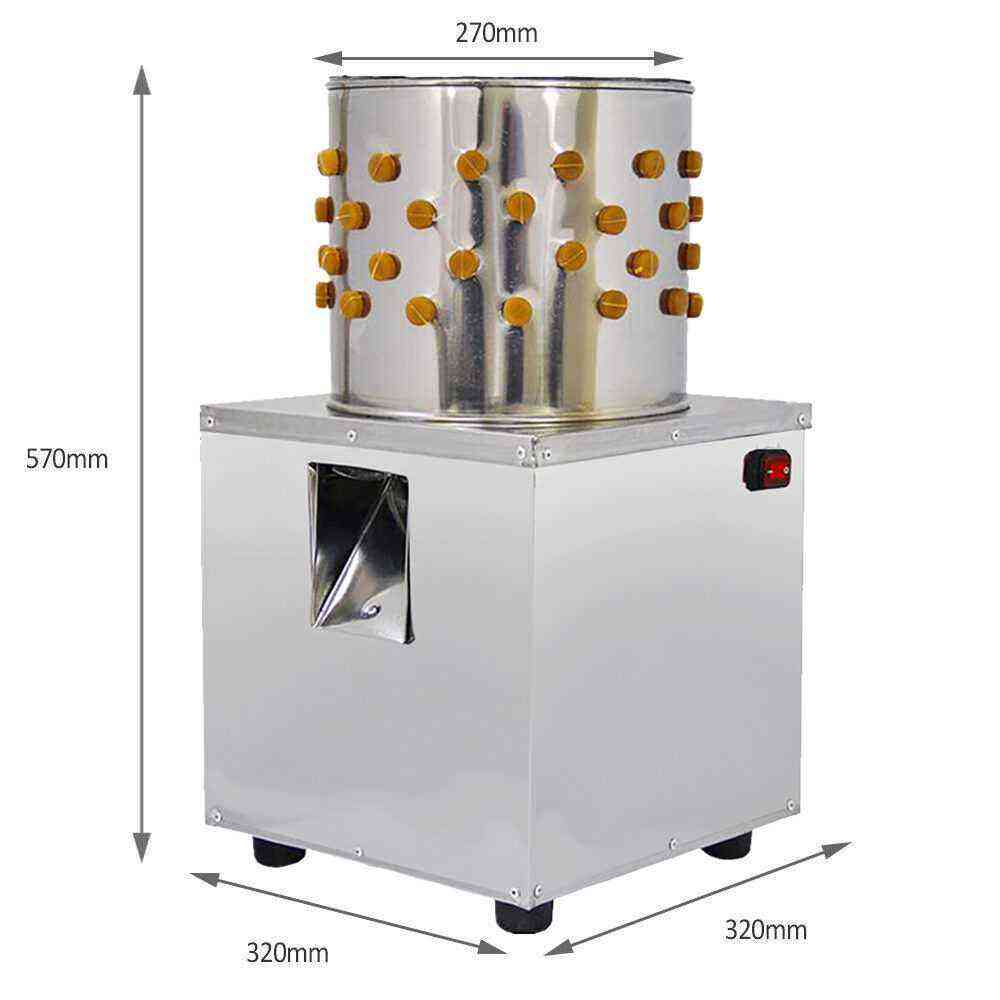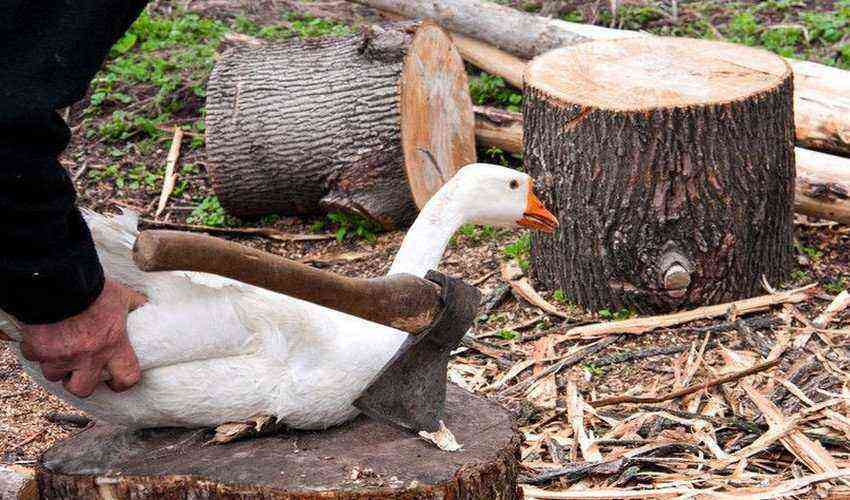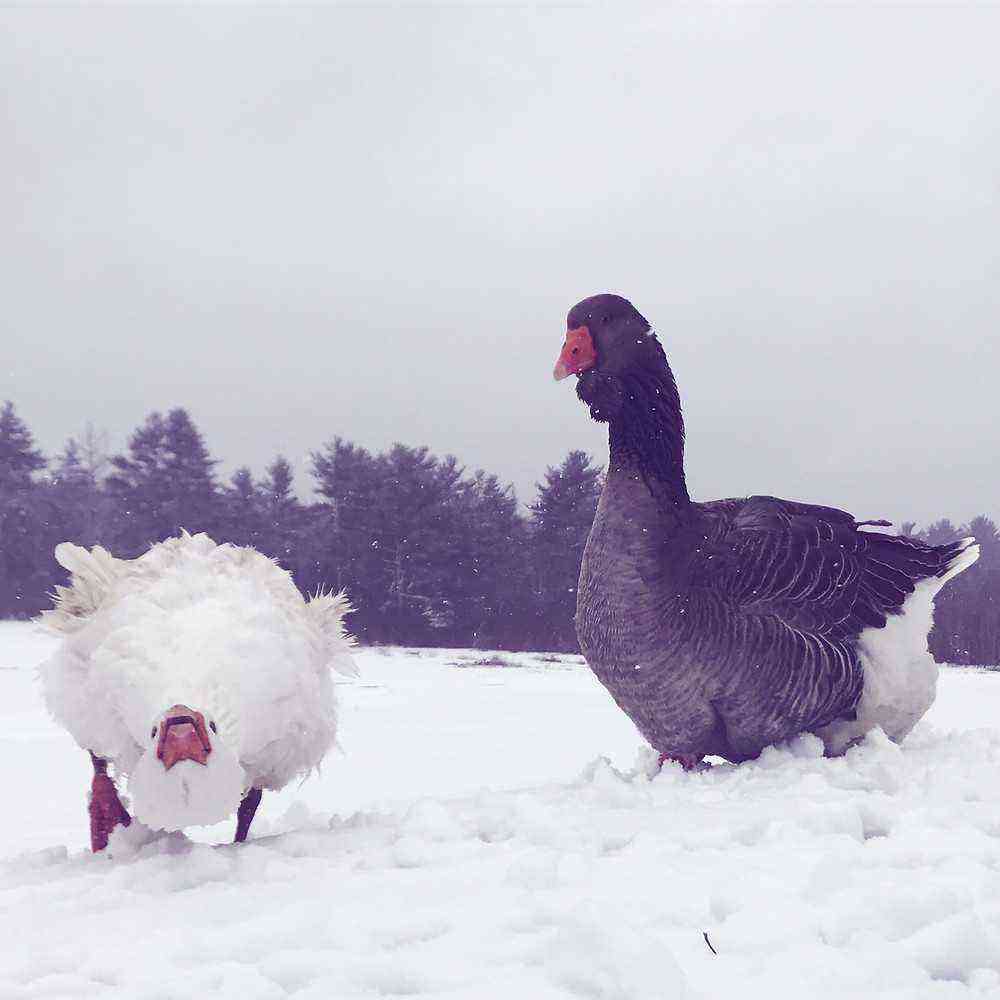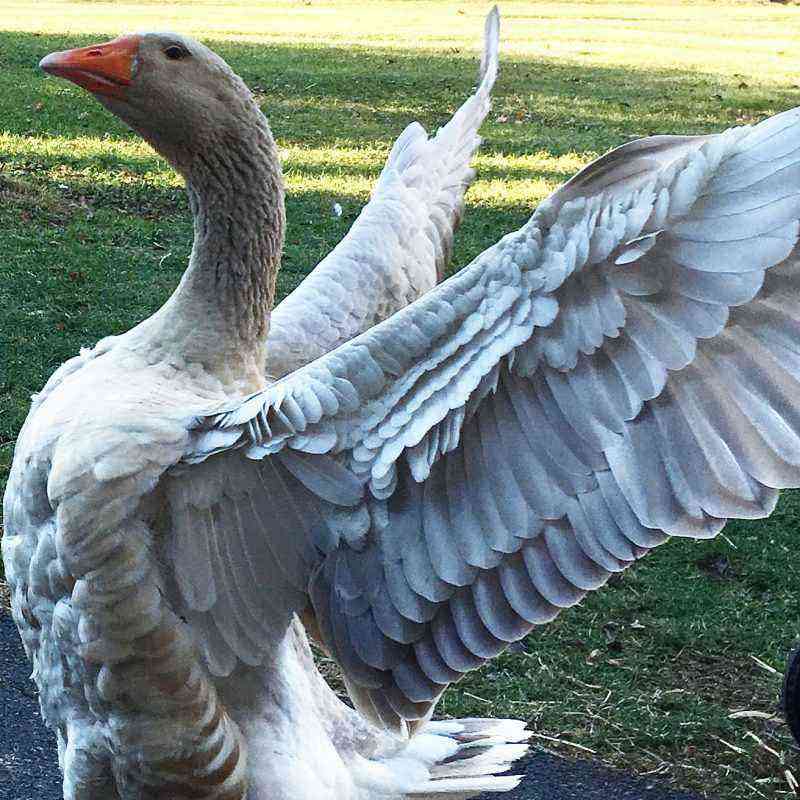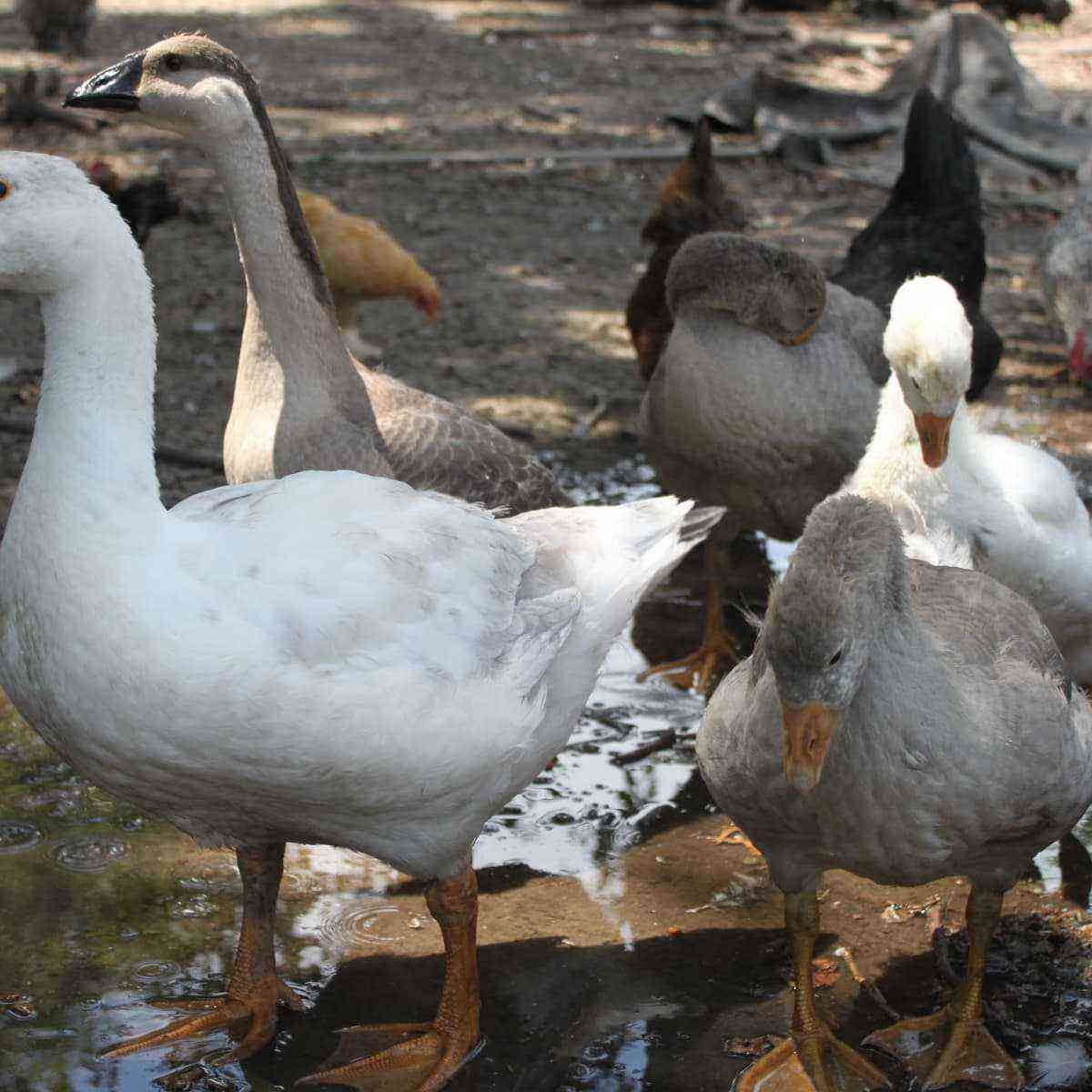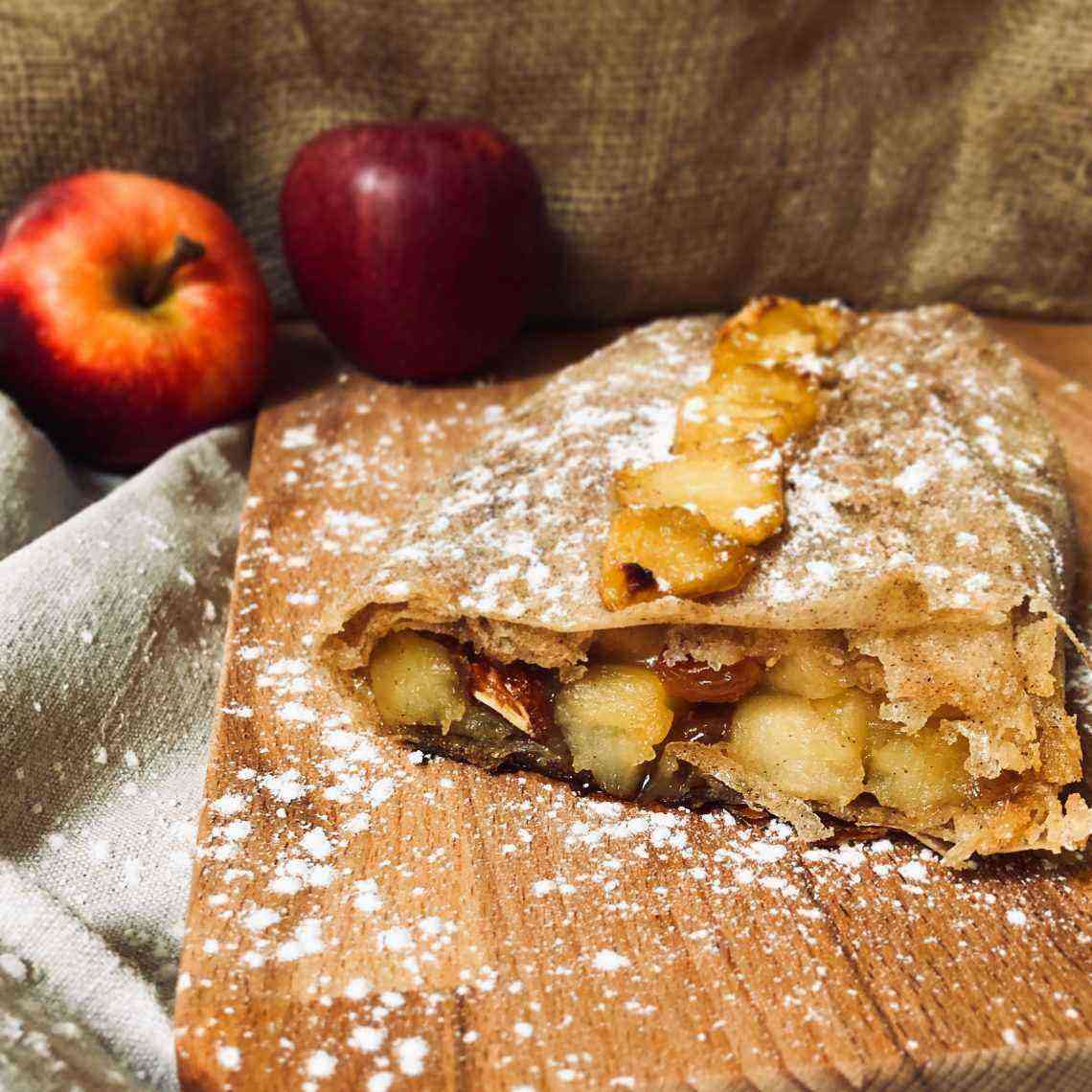If you are breeding geese, you just need to know how the gander differs from the goose. After all, the gender differences between them are not as noticeable as, for example, in chickens and roosters. Let’s look at the main criteria for the differences between small goslings and already adults.
Significance of sex determination in geese
It is important to determine the sex of geese if you are faced with the task of breeding them or selling, for example, the meat of these birds. In this case, you have to competently approach the selection of geese, according to their gender.
Why do it:
- understanding who is who, it is enough just to select the best representatives of both sexes for breeding, and let the rest go to slaughter;
- the process of forming pairs for breeding healthy offspring is facilitated, excluding the mixing of related blood;
- separating young animals, focusing on their gender, will avoid violent conflicts and showdowns in the flock, and will also provide an opportunity to save on food – geese spend less energy, and weight increases faster with the same amount of food consumed;
- the correct ratio of ganders and geese will give a good offspring, allowing you to breed birds in the right quantity.
Some poultry farmers breed geese based on some of their selection criteria. For example, there is an opinion that ganders get sick less, and in themselves they are larger than geese. And someone, on the contrary, loves “girls” because they are more calm, accommodating and do not seek to run away at the first opportunity.
The Importance of Selecting a Herd by Sex
A properly formed herd allows you to achieve optimal performance according to the following criteria:
- obtaining and subsequent sale of meat – for this, form a herd mainly from ganders, as they are larger;
- laying eggs – in this case, focus on breeding females, an overabundance of males will lead to a drop in this indicator;
- the birth of strong and healthy offspring – leave only the strongest and hardiest males;
- breeding chicks for sale – provide correct information about the sex of birds in order to gain regular customers and clearly meet the needs of the buyer without errors.
The optimal ratio in the herd is 4 geese per 1 gander. In this case, according to experts, you can expect an excellent level of egg production and at the same time get enough meat for sale.
Methods for determining sex in young geese
In the goose herd, it is the “boys” that are formed faster. They become adults and ready to reproduce offspring at about 7 months. While females lag behind them in development by about 1-2 months.
At the same time, it is possible to distinguish them from each other much earlier (even after just a day after hatching). The main methods for determining sex are scientific (anatomical), according to the size of goslings, their activity, as well as reactions to fright.
Scientific method
This method allows you to determine the sex of a caterpillar by examining its anatomical structure:
- put the gosling on its back so that its head is pointing slightly down (support it with your little finger), and the tail is slightly raised;
- examine the anus (cloaca) of the chick, in which its genitals are located – to do this, pull the tail a little and slightly spread the cloaca with your fingers;
- if there is a small bent process there, then the chick is a gander, if it is not there, it is a goose (they usually have evenly spaced folds, between which there is a small tubercle).
This method is considered the most reliable, since it is based on the structure of the bird. You only need to have good eyesight in order to accurately examine the organs of the gosling or use additional magnifying devices. For example, a magnifying glass.
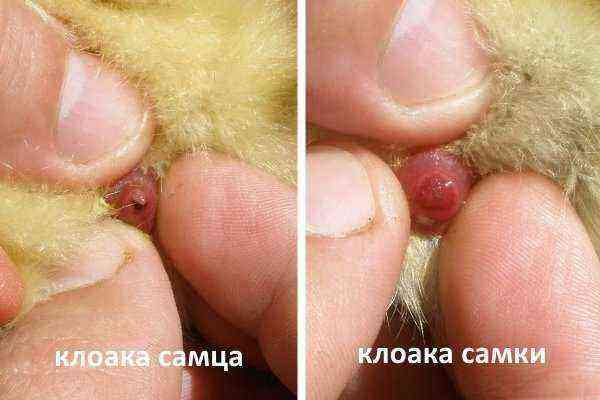
Anatomical discrepancies are most difficult to see between the ages of 4 and 5 months. This is due to the fact that the goslings instinctively clamp the back of the body during this period. If the chick actively resists this procedure, it is better not to injure his psyche and postpone the experiment for a couple of days.
gosling activity
If you look at the behavior and activity of the chicks, it will become noticeable that the “boys” are the most noisy and active. It is they who first examine their possessions and run to the place of feeding. In addition, while still chicks, they already arrange small “wars” among themselves for the right to be a leader.
As for the females, they are completely non-aggressive. Signs of anxiety in them appear only when there is any stress or a feeling of hunger.
gosling sizes
You can determine the sex of a gosling by its size. Ganders are usually larger than geese, and this can be seen already in the incubator. In addition, they are distinguished by their gait. Males walk with their heads proudly raised and their chests sticking out, they like to court their possessions, and are quite curious by nature. While females lower their beak to the ground while walking.

Fright goslings
You can calculate gender by the behavior of goslings in a force majeure situation. Scare them with a sharp unexpected sound and watch their reaction. At the same time, males stretch their necks and raise their heads, appreciating what is happening. And the females, hiding, will snuggle up to the ground.
Don’t use this method too often. Since this will subsequently adversely affect young individuals. They may develop a negative conditioned reflex that makes birds unnecessarily shy and twitchy.
Tarzanka
This method of determining sex is quite popular among the people among poultry farmers and is carried out as follows:
- carefully, so as not to damage the legs of the gosling, take the chick by the legs;
- turn it upside down;
- lower the chick sharply, simulating a fall;
- look at the reaction – the gander will try to get her body or the hands of the holder with her beak, and the female will simply begin to turn her head in different directions.
This method is not as reliable as all the previous ones. It is based on statistical data on the characteristic behavior of ganders and geese. However, each individual chick can react completely unexpectedly in an unusual situation for him. Therefore, relying only on the “Barzan” is not worth it.
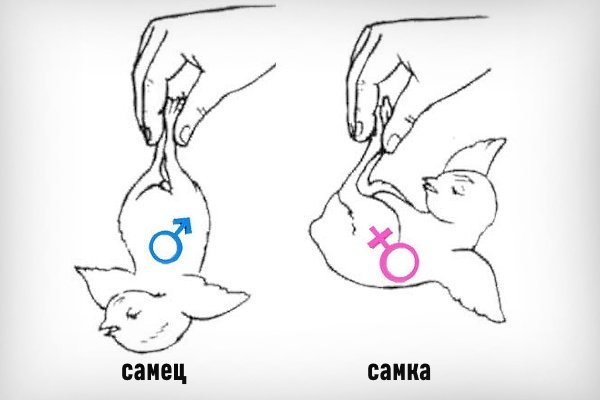
Methods for determining gender in adults
Individuals of adult geese are just as realistic to distinguish as small goslings. To some extent, it is even easier, as some signs become pronounced. Let’s look at the main methods for determining sex in adult birds.
In the world there are such geese, the differences between the sexes are quite pronounced. For example, Kholmogory ganders are distinguished by the presence of a characteristic bump on the beak of a reddish or pinkish with yellow hue. The goose of this breed does not have such a seal.
Scientific method
The procedure for performing this method is the same as in the case of goslings:
- put the bird on its back;
- wrap your legs around the body of the goose;
- lift the tail with one hand, and push the cloaca apart with the other;
- if a bird has a genital organ in the form of a curl, then you have a male in front of you;
- if you see seals in the form of small bubbles – the female (by the way, the female has a slightly flattened nipple in the cloaca, but it is very difficult to mistake it for the male genital organ).
Using this method, it is possible to determine the sex of a bird with 100% certainty. However, keep in mind that adult geese may resist such actions. Males are especially aggressive. They can hiss and bite. To avoid injury in this case, hold the bird lightly between your knees.
There is also another way to hold the bird: sit with it on a chair and hold its wing, slightly leaning on it with your body (the neck should be under the armpit). Hold the second wing with your elbow. In this position, it is convenient to conduct an examination, as the hands become free.
Ideally, of course, you can use a special probe. Inject it into the bird’s cloaca and get a result that is up to 98% accurate. True, such a device costs money, but if you are purposefully breeding geese, then this acquisition will greatly facilitate your life.
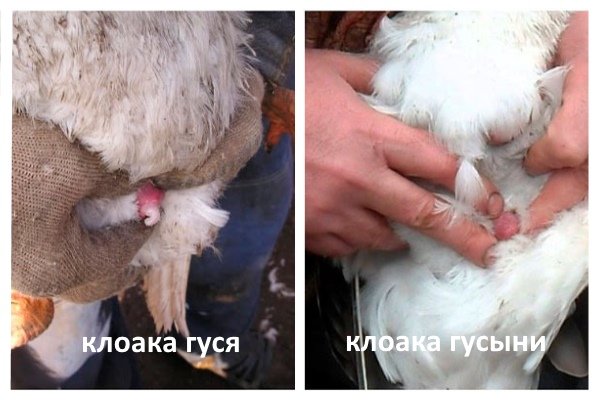
coloring geese
It is generally accepted that geese in their majority have a white coloration of their feathers. This is true, but at the same time, in ganders, the down is distinguished by a slight yellowish tint, and in geese, the plumage is rather gray than white.
True, keep in mind that there are breeds of geese in which the color of females and males is almost indistinguishable. For example, Linda – in this breed of birds, both ganders and geese have white plumage.
Geese sizes
The older the birds become, the greater the difference in their size. Males are heavier than females and weigh on average about 10% more than them. This is due to the fact that the gander, as a defender, needs a lot of strength and, accordingly, mass.
In addition, they have a large and long neck, which is constantly in tension. Geese are smaller than ganders, and their necks are short and thin. The paws of males are also larger, and the membranes between the fingers are wider than those of females.
However, the size of the bird also does not give an accurate guarantee of sex determination. In the same breed of Linda geese (it is she who is most often planted by Russian farmers), both males and females are approximately the same size. Therefore, it is very problematic to distinguish them on this basis.
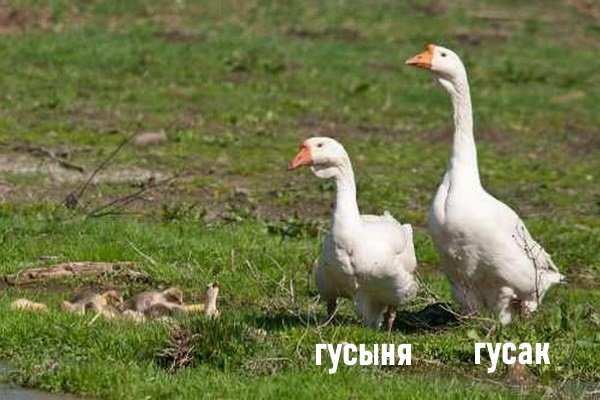
Goose sounds
By the sounds made by geese, you can also determine their gender:
- ganders shout loudly, abruptly, with some rasp in their voices;
- geese scream loudly, and as if holding out a sound.
It is more pleasant for a person to perceive the cries of geese. The sounds that ganders make often irritate people. At the same time, keep in mind the characteristics of the breeds. For example, Chinese males scream thinly and sharply, while females, on the contrary, low.
goose head
As for the head, in ganders it is large and massive. The beak is usually rough and also large, most often black. The head of females is inferior in size to the head of males and has softer, more delicate features. And their beak is usually graceful and thin, of bright color.
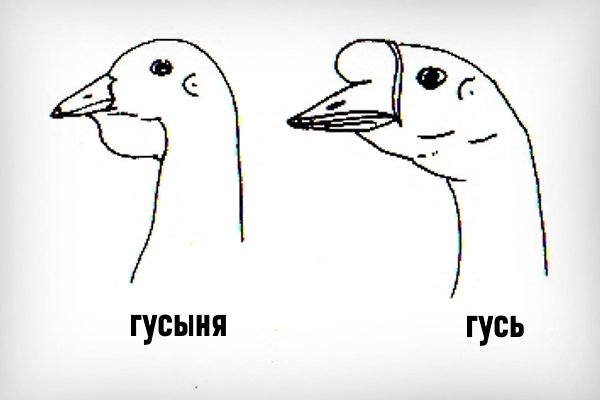
Goose behavior
It is interesting to watch the geese in their mating season. Males, as a rule, are very aggressive and restless at this time. They are fighting with each other for leadership in the pack and the females they like, whose behavior is just quiet and modest. Aggressive geese can only be during the period of incubation of eggs, if there is any danger to future chicks.
The leader of the pack is quite easy to calculate. He always goes ahead of everyone, proudly puffing out his chest and raising his head high, showing with his whole appearance who is the boss here. Also, the leaders most often bypass the territory to control the situation.
The behavior of geese on the water will also help you understand who is who. Ganders swim slowly and majestically, keeping their heads parallel to the water. And after bathing, they take a stance in place, intensively flapping their wings. Geese swimming, tilt their heads, as if making a bow.
As for stressful situations, the behavior of geese is the same as in childhood. Females press into the ground when frightened, and males are ready to repel danger, demonstrating aggression. They hiss, crane their necks, attack.
In the video below, the breeder shares his experience of distinguishing a gander from a goose in terms of their behavior and external signs:
Determination of the age of geese
It is not at all necessary to know the exact age of the geese, but you need to understand whether the bird is young or not. After all, the number of years lived affects the quality of meat (it loses its juiciness and taste), old ganders cannot serve the required number of females, and geese, in turn, carry few eggs or stop producing them altogether.
To determine the age of a bird, pay attention to the following signs:
- a young gander or goose weighs up to 4 kg, while an old bird weighs more than 4,5 kg;
- the belly of young individuals is round, while in old ones it has transverse stretch marks with fat deposits;
- the paws of young females and males are usually shiny, smooth, with thin membranes, but the paws of old birds are covered with scales, and their membranes are already rather rough;
- the beak of young birds is usually yellow, without cracks or other damage, while in old birds it is dark with a characteristic plumb under it, often there are cracks;
- the plumage of young ganders and geese is rather dense, shiny, of a rich shade, but in old birds the color is dull, of dark shades, the feathers are rather disheveled, there are bald patches on the body;
- the young bird looks healthy, moves a lot, and the old one is more in one place, sleeps a lot.
True, keep in mind that if a cough, severe feather loss, lack of appetite, frequent and loose stools or scabies are added to the description of an elderly goose, then the bird is not old, but sick. In this case, show the goose to a specialist – he will tell you what to do next and whether it makes sense to treat such a bird.
Start forming a family when the goslings are already half a year old (about 6-8 months). Combine the birds themselves starting from mid-October. For this purpose, chicks that hatched in late spring are best suited.
You can get eggs already from the period when the goose is 10 months old. At the same time, up to 3 years, egg production rates will only increase. And then the decline begins. Therefore, if this indicator is important to you, do not keep the laying hen in the herd for more than 5 years. But the peak productivity of ganders falls on the age of 2-4 years. Therefore, they are rarely left longer than 6 years of age.
It is better to slaughter geese at a young age, when their weight reaches about 4 kg. Long fattening (more than six months) is not recommended. This is due to the fact that the older the bird becomes, the more sebaceous veins form in it. And this affects the quality of meat and its price.
To keep the breeding of birds at the proper level, keep the optimal ratio of young and older birds. Ideally, a goose flock should consist of 35% juveniles, 30% two-year-olds, 25% three-year-olds, and 10% four-year-olds.
Tips and Tricks
To accurately determine the sex of a bird, use these tips:
- Use the most reliable way – scientific. Since it is based on the anatomical structure of the bird, you will be able to see as accurately as possible which gender it belongs to. Geese do not have hermaphroditic breeds.
- For the accuracy of the result, use all methods in combination. This is how you can most reliably determine the sex of an individual. Because the more methods point to a certain gender, the more likely it is. Any signs are important. At the same time, remember that there are breeds in which ganders and geese almost do not visually differ from each other.
- Consult a professional if in doubt. If, after applying all the methods for determining the sex of a bird, you still have any doubts, contact a specialist who will help solve this problem. Keep in mind that this procedure may be a paid service.
When breeding geese, observe their behavior. It may happen that one of the ganders turns out to be monogamous and tries to create a pair with a particular goose. It will be very difficult to lead him astray in this case, since he is guided by instincts based on the behavior of wild ancestors. Exchange such males for their more polygamous counterparts.
Choose only strong and hardy males. Since it is they who lay the genetic foundations for healthy offspring. In this case, not so much depends on the female.
Make sure that a normal, friendly atmosphere reigns among the geese. It happens that geese are organized to persecute against a particular individual. This negatively affects its productive qualities. And if this is a female, then her egg production will decrease, and goslings may not appear at all.
There are many ways to determine the sex of geese. Use them all in combination to get the most accurate result. If in doubt about your decision, contact a professional who is guaranteed to determine the gender of the bird.
